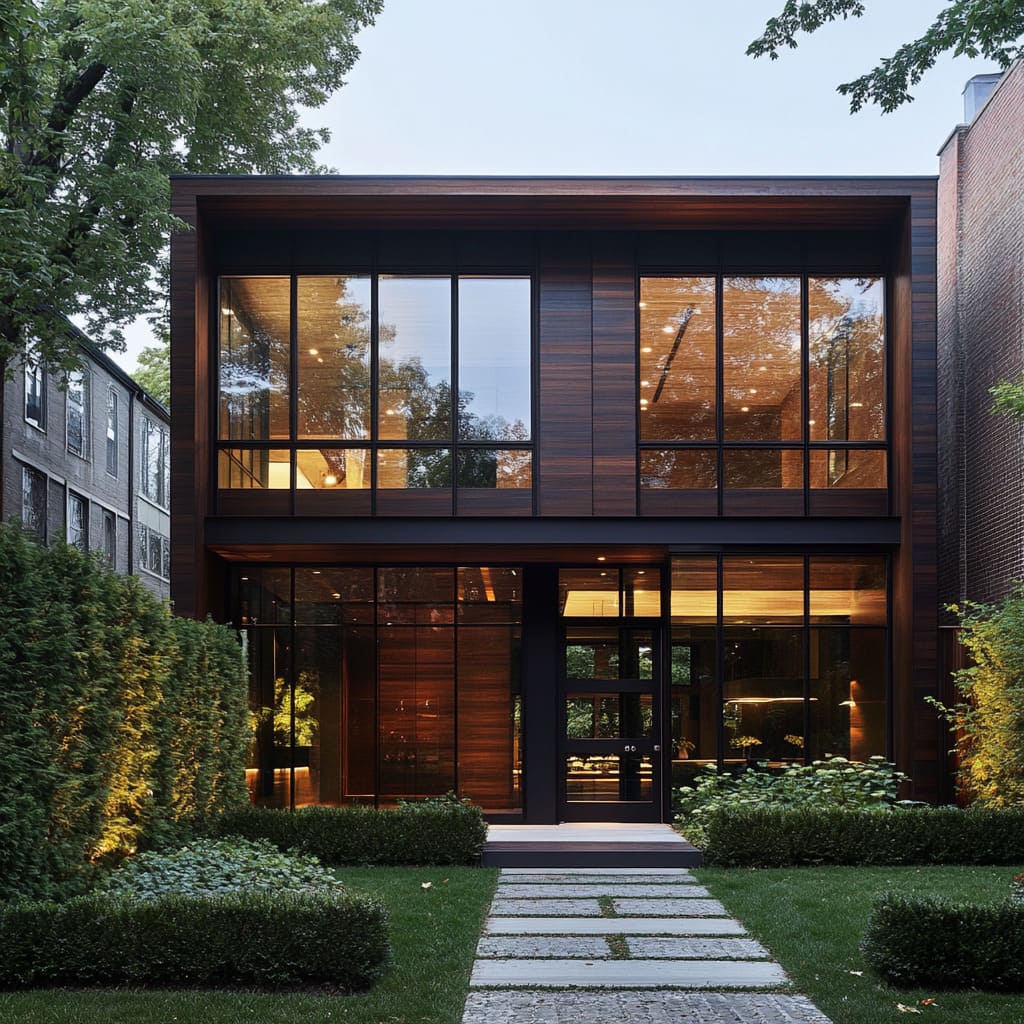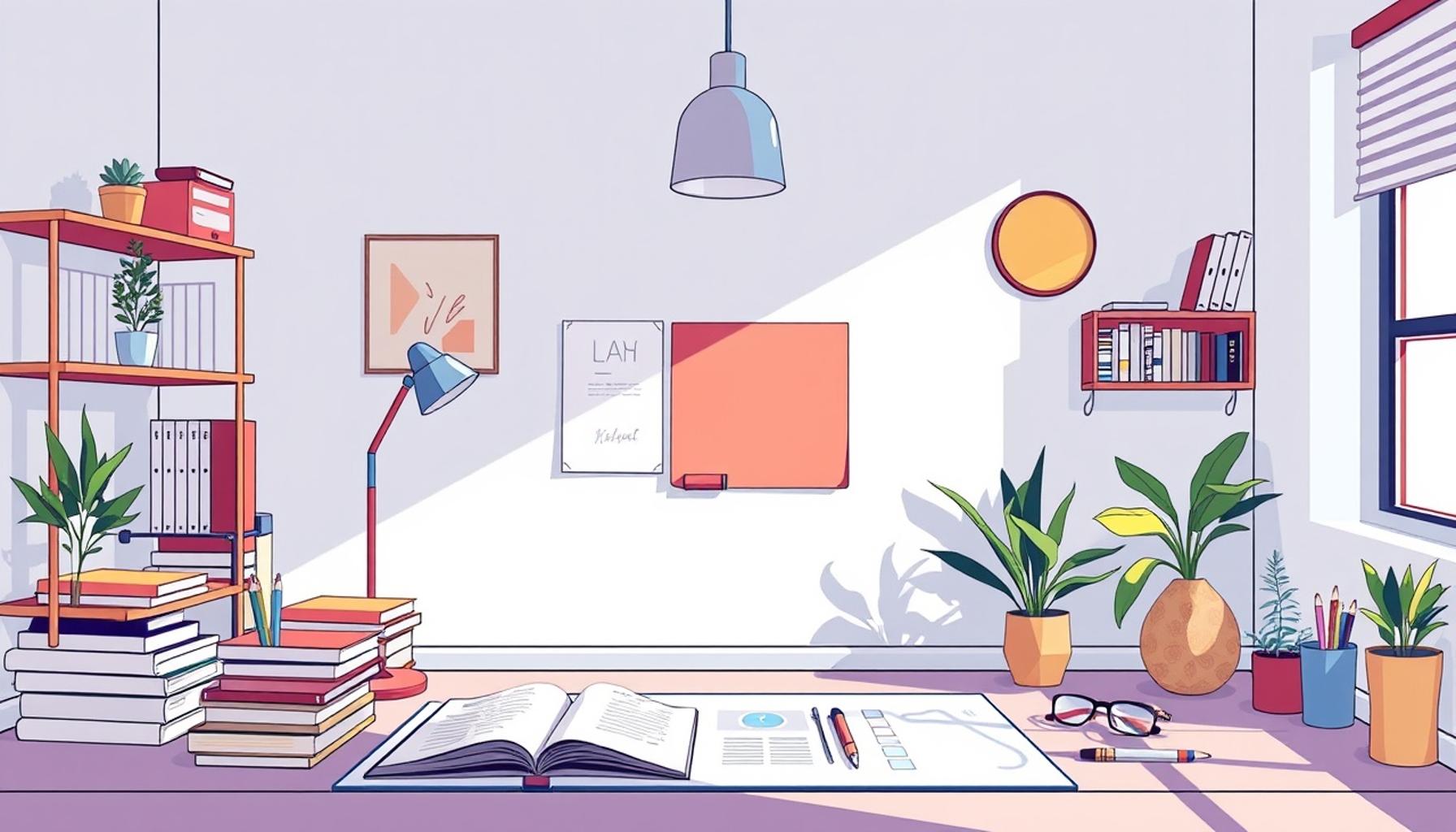How Minimalism Creates a Focus-Friendly Environment for Intense Focus

Understanding the Principles of Minimalism
In today’s fast-paced world, distractions abound. From the constant buzz of notifications to the clutter of our living spaces, finding intense focus can feel like an uphill battle. Many have turned to minimalism as a solution to reclaim control over their environments and, ultimately, their productivity.
But what exactly does minimalism entail? It often includes a lifestyle choice that emphasizes simplicity and a deliberate approach to belongings. The core elements of minimalism include:
- A decluttered space free of unnecessary items, which can reduce visual distractions.
- A curated selection of belongings that spark joy and purpose, making each item meaningful.
- A focus on functionality over ornamentation, ensuring that every object serves a practical purpose.
This intentional approach not only clears physical space but also mental bandwidth, enabling individuals to focus on priorities. By reducing environmental stimuli, minimalism fosters a conducive atmosphere for deep work. As a result, individuals may experience:
- Increased productivity, as fewer distractions lead to more efficient task completion.
- Enhanced creativity, which often flourishes in a serene and organized environment.
- Sharpened concentration, allowing for deeper engagement with complex problems.
Research supports the notion that a clear workspace can lead to a clearer mindset. A study published in the journal “Personality and Social Psychology Bulletin” found that individuals working in a clean and organized environment performed better on tasks that required sustained attention and focus compared to those surrounded by clutter. This correlation highlights the importance of space in the pursuit of productivity.
As both professionals and students seek better ways to enhance their focus, the principles of minimalism offer a compelling path forward. For example, consider digital minimalism—removing distracting apps from smartphones or unsubscribing from unnecessary email lists can greatly reduce the cognitive load on an individual’s mind.

Get ready to explore how minimalism can transform your workspace into a focus-friendly environment. By embracing this minimalist approach, you can harness the power of concentration, streamline your daily tasks, and ultimately achieve your goals with greater ease. It’s an invitation to rethink your possessions and reclaim your focus in a world filled with distraction.
CHECK OUT: Click here to explore more
The Impact of Decluttering on Focus
At its core, minimalism encourages individuals to simplify their living and working environments, stripping away distractions that can hinder productivity. The act of decluttering not only pertains to physical space but extends to mental clarity as well. When we remove excess items from our surroundings, we create a space that invites intense focus. This introduction of less chaos and more order greatly influences the way our brains process information.
Consider that our environment plays a crucial role in shaping our behavior and mindset. According to the data from the American Psychological Association, cluttered spaces can lead to stress and anxiety, which in turn, diminishes our ability to focus effectively. When our eyes wander over disorganized stacks of paper or an overflowing closet, our minds are less likely to settle on the task at hand. Instead, they become preoccupied with everything that needs to be addressed, diverting attention away from our intended objectives.
To better understand the benefits of a decluttered environment, let’s delve into the practical advantages that minimalism presents:
- Enhanced Clarity: A clean space encourages clear thinking, allowing individuals to approach their tasks with clarity and a fresh perspective.
- Reduced Stress: Removing excess items can alleviate feelings of overwhelm, facilitating a calmer atmosphere where concentration can thrive.
- Improved Organization: With fewer items to manage, finding tools and resources becomes easier, leading to less time wasted and more time spent on productive activities.
Furthermore, the relationship between minimalism and productivity is reinforced through various studies showcasing the correlation between environmental orderliness and cognitive performance. A study by Princeton University revealed that individuals working in organized environments performed significantly better on cognitive tasks compared to those situated in cluttered settings. This research emphasizes how creating a focus-friendly environment is not merely a preference but a necessity in maximizing cognitive function.
Incorporating minimalism into your workspace can take different forms, from reorganizing desk supplies to embracing a more streamlined digital life. For instance, the practice of digital minimalism—where one limits digital distractions such as social media or unnecessary notifications—directly parallels the principles of physical minimalism. Each step taken towards minimizing distractions contributes to sharpening our ability to concentrate.
As you embark on your journey towards creating a focus-friendly environment, the principles of minimalism can guide the way. The key lies in recognizing that the elimination of excess fosters not only a more aesthetic space but also a sanctuary for deep thought and creativity. Embracing these concepts can lead you to rediscover your potential, enabling you to engage more profoundly with your work and, ultimately, enhance your productivity.
In the pursuit of heightened productivity and mental clarity, embracing a minimalist approach can significantly transform your workspace. Minimalism, at its core, strips away the unnecessary clutter that often distracts from the task at hand. By focusing on essential elements only, such as functional furniture and selected decor, individuals can create an environment that naturally fosters intense concentration.
One of the key attributes of a minimalist space is the intentional use of color. Neutral and muted tones are often employed to reduce visual stimulation, allowing the mind to focus on the work rather than being distracted by vibrant hues. Additionally, the arrangement of objects within a space is streamlined to ensure easy navigation without overwhelming the senses. This polished aesthetic not only helps with mental clarity, but it also invites a sense of calmness and relaxation, laying the groundwork for an optimal working environment.
Moreover, minimalism encourages the practice of mindfulness. When the physical space is devoid of extraneous items, the mind learns to filter out distractions more effectively. This can lead to enhanced focus on tasks, ultimately improving overall efficiency. The practice of decluttering extends beyond physical possessions; it also encompasses digital spaces, such as your computer desktop, making it crucial to adopt an all-encompassing minimalist approach.
By creating boundaries in both your physical and digital environment, you empower yourself to dive deeper into your projects without the constant pull of distractions. As a result, you develop a more profound ability to maintain intense focus and achieve your goals in less time.
| Category | Advantages |
|---|---|
| Structured Environment | Enhances mental clarity by reducing distractions, allowing one to concentrate better. |
| Mindfulness | Promotes focus on present tasks, improving decision-making and productivity. |
SEE ALSO: Click here to read another article
The Role of Intentionality in Minimalist Spaces
While decluttering is a powerful first step, minimalism extends beyond the absence of items; it emphasizes the importance of intentionality in our environments. Each item we choose to keep should serve a purpose, whether it’s functional, aesthetic, or inspirational. This focus on meaningful belongings transforms our spaces into curated environments that not only enhance focus but also nourish creativity.
The act of being selective about our possessions encourages a more profound connection to our work. A report from the National Institutes of Health indicates that individuals who work in intentional spaces often describe feeling more engaged and motivated. By surrounding ourselves with objects that play a significant role in our lives, we create a sense of ownership over our space. This ownership can lead to improved mental dedication toward tasks, paving the way for intense focus.
Implementing Minimalism in Daily Routines
Embedding minimalism into daily routines can yield significant dividends in terms of focus and productivity. Start with creating a dedicated workspace that is both organized and inspiring. Natural lighting and plants can enhance a room’s atmosphere and promote a calm state of mind. A study published in the Journal of Environmental Psychology found that workers in environments imbued with natural elements reported higher levels of attentiveness and mood elevation.
To support this environment, consider implementing the “one in, one out” rule. For every new item you introduce to your workspace, remove one. This practice helps maintain a consistent level of minimalism, ensuring that your space remains conducive to deep concentration. Moreover, adopting a daily declutter practice—such as dedicating five minutes at the end of each day to tidy up your surroundings—can significantly reduce the buildup of distractions over time.
The Digital Minimalism Movement
In an age dominated by technology, the concept of minimalism even extends into the digital realm. The digital minimalism movement advocates for a more focused interaction with technology, recognizing that the constant barrage of online notifications, emails, and social media can fragment attention. A survey by the Pew Research Center revealed that 46% of U.S. adults feel overwhelmed by the amount of information available to them online, indicating the urgent need for strategy in digital consumption.
By streamlining digital experiences, such as decluttering email inboxes or organizing files into meaningful categories, individuals can embrace a clearer pathway to focus. Tools such as website blockers can help reduce time spent on distracting sites, reinforcing the primary goal of fostering an environment conducive to intense focus.
The Long-Term Benefits of a Minimalist Mindset
The long-term implications of embracing minimalism are substantial. Individuals who adopt minimalist principles often report improvements in their mental health and overall well-being. A report from Harvard Business Review found that those who intentionally cultivate minimalist practices tend to experience lower levels of anxiety and greater satisfaction in their everyday lives. This satisfaction stems from a sense of control over one’s environment, which directly correlates to enhanced focus and productivity.
As awareness of minimalism continues to grow, it holds tremendous potential for creating spaces that support superior cognitive performance. By integrating both physical and digital minimalism, individuals can master the art of fostering environments that not only promote focus but also empower creativity, ultimately leading to higher levels of achievement in both personal and professional endeavors. The journey towards a focus-friendly atmosphere is not merely about simplification; it embodies a holistic approach to living with purpose and intention.
CHECK OUT: Click here to explore more
Conclusion
In a world filled with distractions and overwhelming information, minimalism emerges as a beacon for those seeking to nurture a focus-friendly environment. By embracing the principles of minimalism, individuals can curate their physical and digital spaces in ways that are both intentional and meaningful. The transformation of chaotic surroundings into tranquil spaces fosters not only heightened concentration but also sparks creativity, allowing individuals to connect deeply with their work.
Moreover, the discipline of maintaining a minimalist approach—whether through simple decluttering habits or the thoughtful selection of digital interactions—yields substantial benefits for mental well-being and productivity. The insights from studies underscore that a minimalistic lifestyle correlates with reduced anxiety and improved life satisfaction, leading to a more engaged and motivated mindset. As we adopt these practices, we empower ourselves to navigate our tasks with greater clarity and purpose.
Ultimately, the journey towards creating a focus-friendly environment is a continuous process of reflection and adjustment. By questioning the necessity of our belongings and technological interactions, we not only simplify our day-to-day experiences but also open the door to a focused and fulfilling life. So whether you’re decluttering your workspace, organizing digital files, or redesigning your daily routines, remember that minimalism is more than an aesthetic—it’s a pathway towards achieving intense focus and maximizing your potential in both personal and professional realms.



